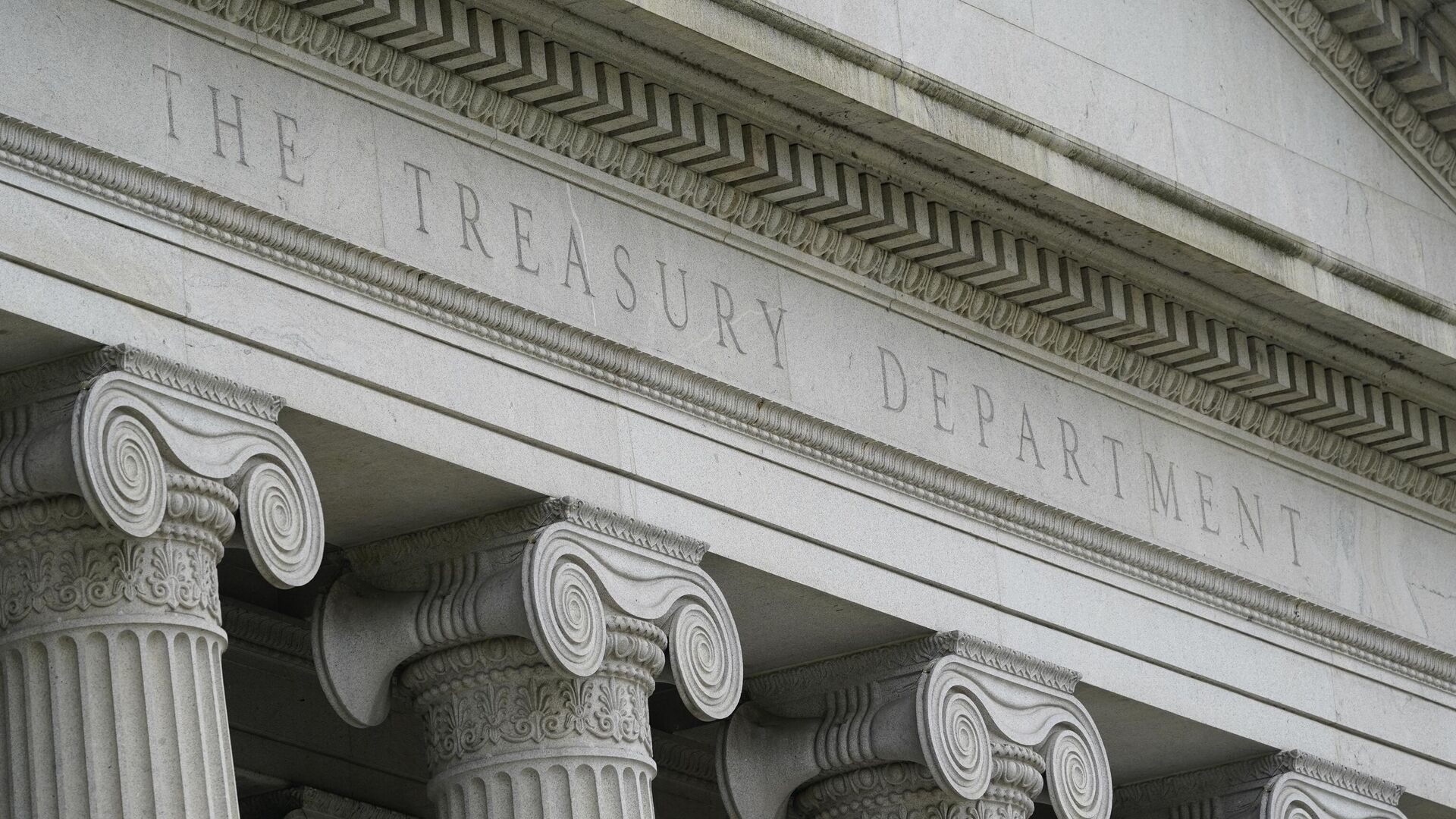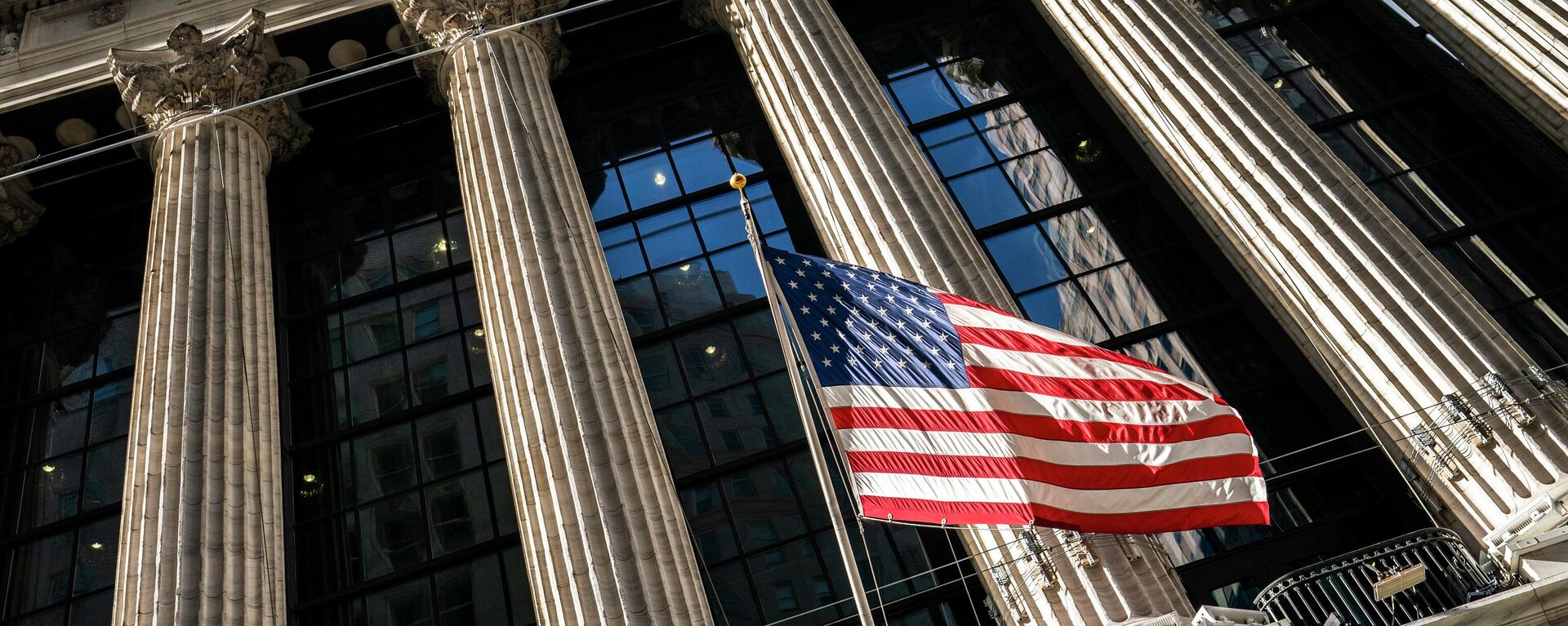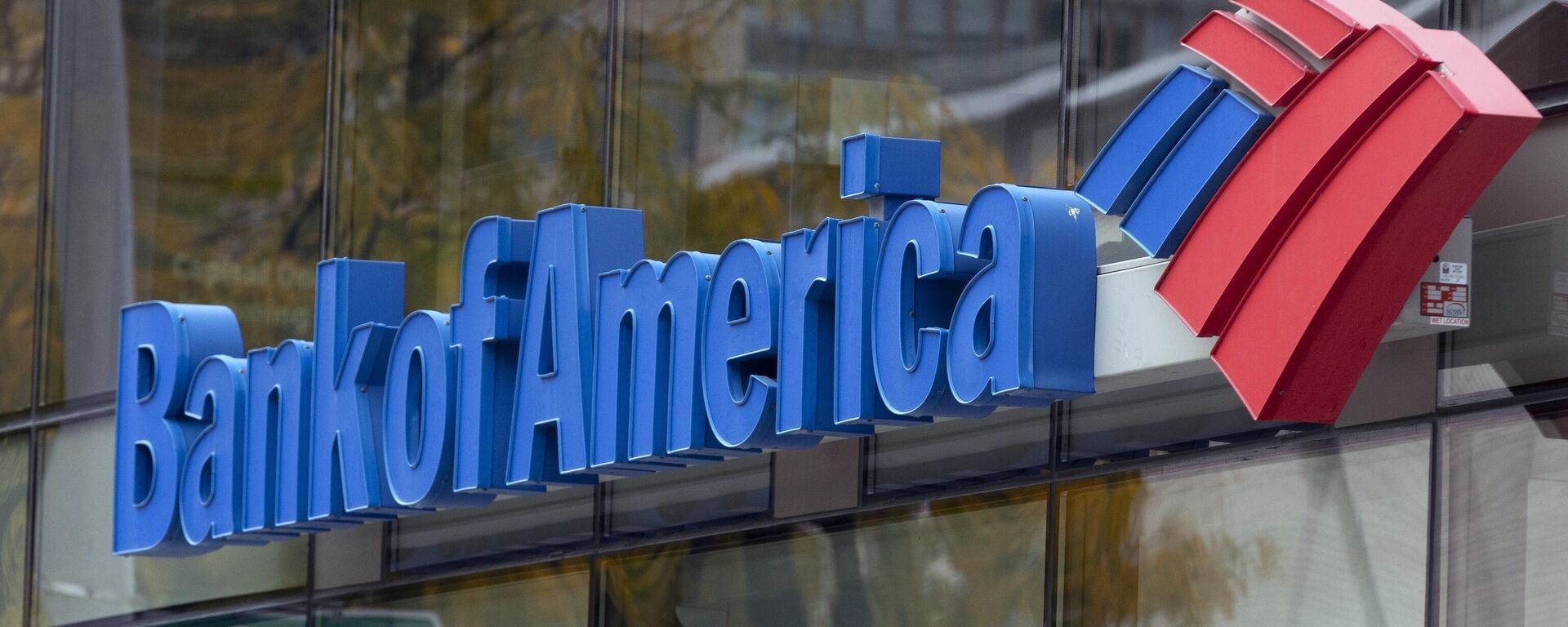https://sputnikglobe.com/20230622/deepening-inverted-yield-curve-signals-investors-expect-us-recession-1111405518.html
Deepening Inverted Yield Curve Signals Investors Expect US Recession
Deepening Inverted Yield Curve Signals Investors Expect US Recession
Sputnik International
The Federal Reserve has declined to raise interest rates, but noted it might in the future. Observers noted key metrics still point to inflation problems, but the higher interest rates go, the harder it will be to avoid recession.
2023-06-22T20:02+0000
2023-06-22T20:02+0000
2023-06-22T20:01+0000
jerome powell
us federal reserve
treasury
bonds
recession
economy
https://cdn1.img.sputnikglobe.com/img/07e6/0c/0d/1105417605_0:0:3072:1728_1920x0_80_0_0_3579edff06f8bdb825f2ceca071e1bcd.jpg
Investors are increasingly betting that the US economy will crash in the coming months, buying up more short-term US Treasury bonds than they are long-term bonds.On Wednesday, the yield for a two-year Treasury bond was 4.74% and for a 10-year bond was 3.78% - a gap of nearly an entire percentage point, which hasn't been seen since March.The situation, commonly known as an inverted yield curve because it’s a reversal of normal trends, has been around since April of 2022, when the Fed first began its interest rate-raising offensive against record-high inflation. However, it reached its widest point in more than three months on Wednesday, after Fed chairman Jerome Powell told lawmakers that more rate hikes were almost definitely on the way.The central bank declined to raise interest rates last week on the heels of the best inflation report in more than two years, but noted that while aggregate inflation was down, prices remained high in certain sectors, such as food and petroleum, that could continue to push inflation up.However, the Fed’s favored tactic to fight inflation - raising interest rates to slow down the velocity of money - is well-known to trigger an increase in unemployment and even a recession if it gets severe enough. With the effective federal funds rate already at 5-5.25%, the risk becomes ever greater with each rate hike - which is why investors are buying up two-year bonds faster than they are 10-year bonds.An inverted yield curve has been one of the most reliable barometers for recessions for more than half a century, with an economic contraction coming between six months and two years after the curve becomes inverted.According to the most recent forecasts, the yield on a two-year Treasury note is expected to fall about 70 basis points over the next six months to 4.00%. The short-term bond is seen as the most sensitive to near-term monetary policy decisions.By the bank’s estimates, the US economy will slow down through the rest of 2023, with unemployment creeping higher, and a recession is expected to begin in early 2024.That view is not unanimous, though. Prior to the FOMC meeting, Goldman Sachs argued in early June that the chance of a US recession had decreased, giving only a 25% chance that one begins in the next 12 months. However, that was primarily motivated by Congress reaching a deal on the debt ceiling, avoiding the immediate threat of a US government default.In its own estimates last week, the Fed increased its expectations of US economic performance for 2023, although it left its lackluster predictions for 2024 and 2025 basically intact.
https://sputnikglobe.com/20230621/us-fed-chief-says-nearly-all-policy-makers-want-more-rate-hikes-1111370396.html
https://sputnikglobe.com/20230604/bank-of-america-head-predicts-start-of-recession-in-us-in-second-half-of-2023-1110907596.html
Sputnik International
feedback@sputniknews.com
+74956456601
MIA „Rossiya Segodnya“
2023
News
en_EN
Sputnik International
feedback@sputniknews.com
+74956456601
MIA „Rossiya Segodnya“
Sputnik International
feedback@sputniknews.com
+74956456601
MIA „Rossiya Segodnya“
treasury bonds; recession; inverted yield curve; investors
treasury bonds; recession; inverted yield curve; investors
Deepening Inverted Yield Curve Signals Investors Expect US Recession
The US Federal Reserve declined to raise interest rates earlier this month, but noted it might do so again in the future. Observers have noted that key metrics still point to inflation problems, but the higher interest rates go, the harder it will be to avoid triggering a recession.
Investors are increasingly betting that the US economy will crash in the coming months, buying up more short-term US Treasury bonds than they are long-term bonds.
On Wednesday, the yield for a two-year Treasury bond was 4.74% and for a 10-year bond was 3.78% - a gap of nearly an entire percentage point, which hasn't been seen since March.
The situation, commonly known as an inverted yield curve because it’s a reversal of normal trends, has been around since April of 2022, when the Fed first began its interest rate-raising offensive against record-high inflation. However, it reached its widest point in more than three months on Wednesday, after Fed chairman Jerome Powell told lawmakers that more rate hikes were almost definitely on the way.
"Nearly all FOMC participants expect that it will be appropriate to raise interest rates somewhat further by the end of the year," Powell told a Senate committee, referring to the Federal Open Market Committee, which decides on rates.
The central bank
declined to raise interest rates last week on the heels of the
best inflation report in more than two years, but noted that while aggregate inflation was down, prices remained high in certain sectors, such as food and petroleum, that could continue to push inflation up.
However, the Fed’s favored tactic to fight inflation - raising interest rates to slow down the velocity of money - is well-known to trigger an increase in unemployment and even a recession if it gets severe enough. With the effective federal funds rate already at 5-5.25%, the risk becomes ever greater with each rate hike - which is why investors are buying up two-year bonds faster than they are 10-year bonds.
“Bad things happen when the yield curve is inverted,” Mike Cudzil, a portfolio manager at Pimco, told one publication. “With very inverted yield curves, you tend to see a slowdown in credit creation. This is one reason why a shallow recession by the end of this year, or beginning of next year, is our base case scenario.”
An inverted yield curve has been one of the most reliable barometers for recessions for more than half a century, with an economic contraction coming between six months and two years after the curve becomes inverted.
According to the most recent forecasts, the yield on a two-year Treasury note is expected to fall about 70 basis points over the next six months to 4.00%. The short-term bond is seen as the most sensitive to near-term monetary policy decisions.
In the wake of the FOMC report last week, Deutsche Bank chief economist David Folkerts-Landau penned a report stating in no uncertain terms that “The US is heading for its first genuine policy-led boom-bust cycle in at least four decades.”
By the bank’s estimates, the US economy will slow down through the rest of 2023, with unemployment creeping higher, and a recession is expected to begin in early 2024.
That view is not unanimous, though. Prior to the FOMC meeting,
Goldman Sachs argued in early June that the chance of a US recession had decreased, giving only a 25% chance that one begins in the next 12 months. However, that was primarily motivated by Congress reaching a deal on the debt ceiling, avoiding the immediate threat of a US government default.
In its own estimates last week, the Fed increased its expectations of US economic performance for 2023, although it left its lackluster predictions for 2024 and 2025 basically intact.




